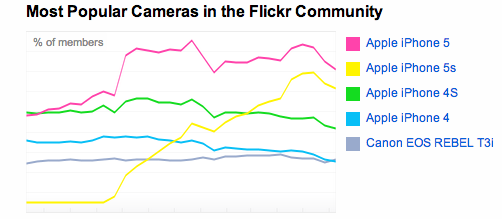If you start a Google search for “citizen journalism”, mostly it will lead to Bowman and Wills’ definition (maybe just because somebody wrote this on the Wikipedia). My definition is much simpler: it needs to be citizen-driven, and it should be journalism. In particular, the more a activity responses to journalism needs, sticks to journalism value, engage citizen participation, the more compelling it is as a form of citizen journalism. In this sense, I think the best candidate to this time is cameras in everybody’s mobile phones (I will refer them to “Phone Cameras” from now). And here’s why.
1. Phone cameras are journalism
Mobile phone cameras meets with most of the (boring) news value criteria in journalism schools. It is fast (remember the plane in Hudson River?), it is relavant to everyday life, and in most cases, it tells the truth.

2. Phone cameras are pervasive
It cannot be a “compelling” citizen journalism form if its user base only a smallest portion of the population. However, it is not the case in mobile cameras. Even the not-so-smart cellphone can take pictures now, delivering live news from every corners of the world.

3. Phone cameras are democratic
Mobile Cameras really give power to the people. Those who have power, no matter physical or political, could no longer abuse their power in front the mere possibility that somebody may take up their phone and take a picture. In fact, the action of “taking out the phone” could be a straightforward demonstration that “we are not afraid of you, we are the public.” Mobile camera is the first surveillance technology at the hand of the people.
4. Phone cameras are “authentic”
Mobile Cameras have a natural attribute of being authentic. Seeing a crude picture from middle east(probably from a outdated phone), most people will believe this is the truth and the picture is taken as it is. Strangely, the worse the quality of the photo, the more authentic it seems to be. In this sense, manufacturers should really consider produce phones with worse cameras.
5. Phone cameras provoke actions
When conditions of a city’s infrastructure are shown with crude pictures taking by cellphones, city administration can no longer ignore them; when the cop beating protesters is caught with phone cameras, anger arise among people. The fact that phone cameras can document anything at anytime makes mass social monitoring possible, leading to more sophisticated use such as the promise tracker.
6. Phone cameras are non-professional
Other citizen media ideas often require some expertise, from technology familiarity to communication skills such as writing, and that is why they are (almost) all failed. But phone cameras are the perfect media for non-professionals – no skill needed (even photographic skill), just tap the button. An intellectual or professional media worker gains no advantage in using phone cameras (as shown in #4).
7. Phone cameras makes “professional” journalists
In the same time, ordinary citizens are trained into a habit that is often seen in professional journalists: they quickly pick up scent of news; they share photos as if there’s a deadline pushed by the editors; and in scenes of emergency, they take pictures before they run away or call the police.

8. Phone cameras set agendas
Agenda setting is considered the modern form of control (by government of ruling class or whatever). But thanks to phone cameras, we gradually stop talking about “big events” or “big figures” in the newspaper, we start to talk about who appears in selfies of whom; who visited which places; and who tasted what food. Citizens’ mind are no longer “void of information” waiting for news agencies to fill in. Somebody may say that there is less civic engagement here, but there is not much in the traditional way too.
9. Phone cameras invade privacy
Journalism has always been the enemy to privacy, if you see it as a way of selectively making personal affairs public. Phone cameras are the best tool for making something public without leaving a trace. The new iterations of phone cameras such as narrative clips and google glasses will further ensure that privacy is the least concern.
10. Phone cameras are promising
Unlike most of journalism tools that does not change for a long time, phone cameras evolve constantly. Phones can take picture more rapidly, and can take more pictures in a fixed time; Phone cameras now come with built-in editing tool to make sure that photos are as biased as news; and new attachments such as selfie poles let you take selfies during a parade.
